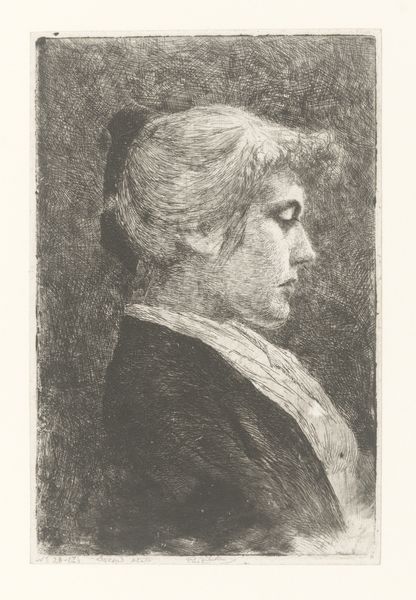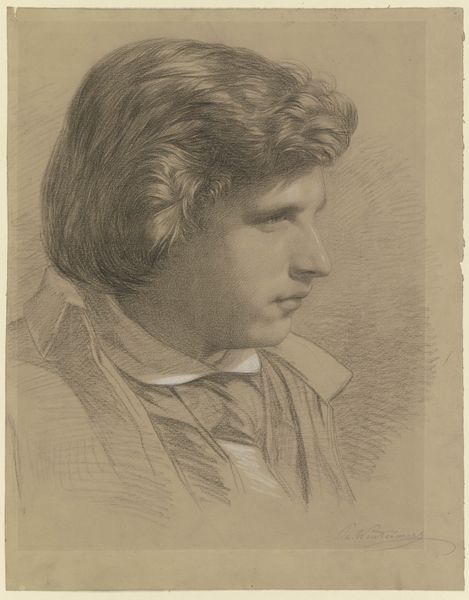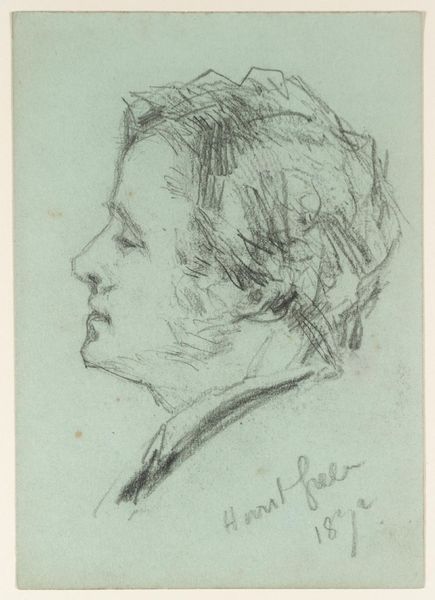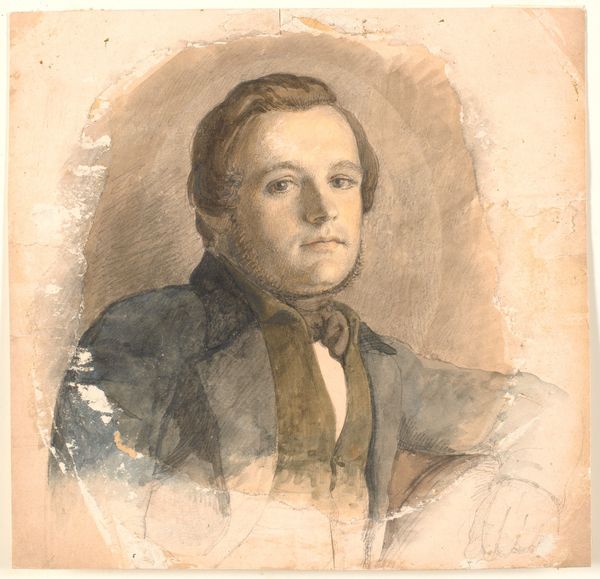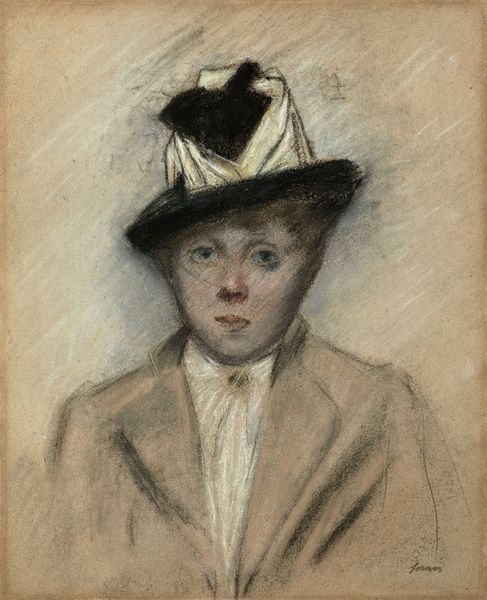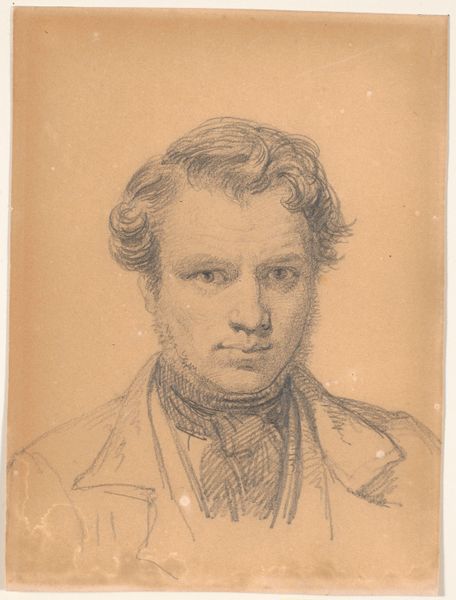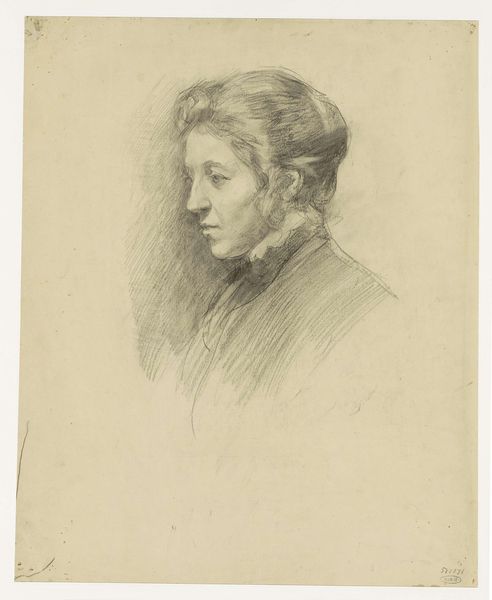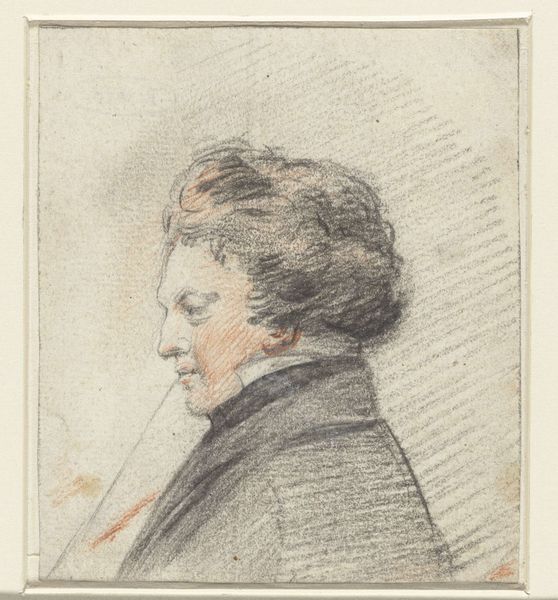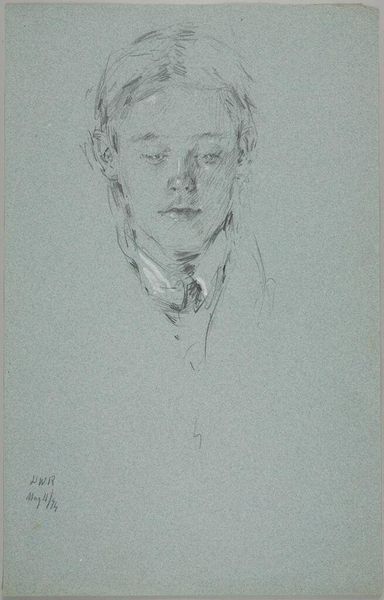
Dimensions: 252 mm (height) x 161 mm (width) (bladmaal), 251 mm (height) x 160 mm (width) (billedmaal)
Curator: Here we have L.A. Ring's pastel and watercolor drawing, "Portrait of teacher N.P. Andersen," dating from 1885 to 1886. There's a directness in the gaze that strikes me, even in profile. Editor: The first thing I notice is the rough, almost raw texture of the paper coming through. You can practically feel the tooth of it beneath the pastel. The immediacy is wonderful! Curator: The portrait's background, a simple but expressive cobalt blue, isolates and elevates the figure. Blue is associated with reflection and thought; do you think this was a conscious choice related to his profession as a teacher? Editor: Definitely intentional! But let's consider Ring's process. Pastel offers a very direct connection between the artist’s hand and the surface. There’s a physicality here. It wasn’t about meticulously layering oil paints, it’s about capturing the likeness quickly. Curator: That links back to the Romanticism style. Rather than clinical realism, it’s concerned with conveying the spirit and character of Andersen. His somber expression and formal dress convey dignity, a visual symbol of authority and learning. Editor: Yet, the very choice of pastel as opposed to oil hints at a different type of consumption and artistic labour, in an era before art photography became commonplace. Consider the ease with which a work like this is both commissioned and disseminated between networks of related elites, creating a whole new economic relationship between sitter and artist. Curator: You're drawing out an interesting angle. But stepping back, to me, there's an element of timelessness that resonates in how the symbolism creates an archetypal feel. You can picture generations of teachers who dedicate their lives to this same endeavor. Editor: True. Although pastels are inherently ephemeral. Consider how unstable that pigment is, how easily the image can fade and disappear. The material itself embodies the passage of time. Curator: So, while capturing a moment in time, its own physical transience reminds us of our mortality. Thank you. Editor: A worthwhile perspective to contemplate as we conclude. It encourages one to examine what they see on multiple planes.
Comments
No comments
Be the first to comment and join the conversation on the ultimate creative platform.

